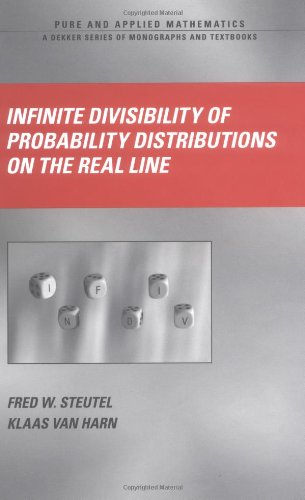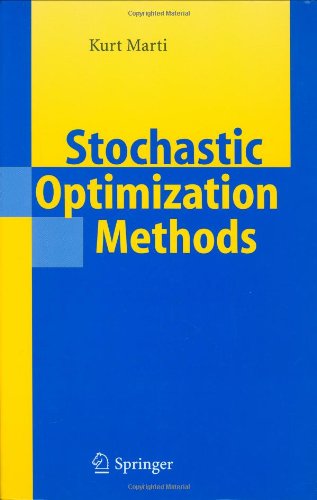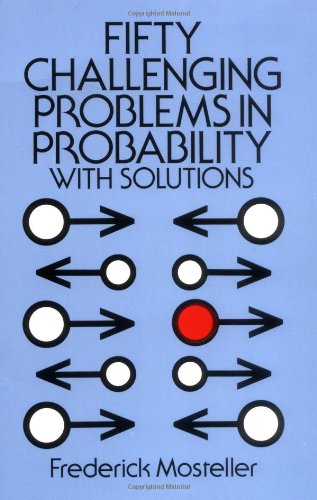Fred W. Steutel0824707249, 9780824707248, 9780824756932
Fundamental to theoretical probability and valuable in such applications as financial, insurance, and biological modeling and deconvolution problems in mathematical physics, infinite divisibility has proven to be a very profitable area of research. Reassessing classical theory and presenting new developments, Infinite Divisibility of Probability Distributions on the Real Line is a definitive, example-filled text focused on divisibility with respect to convolution and addition of independent random variables.
Table of contents :
Infinite Divisibility Of Probability Distributions On The Real Line……Page 1
Contents……Page 12
Dedication……Page 9
Preface……Page 10
1. Introduction……Page 16
Contents……Page 0
2. Elementary Considerations And Examples……Page 17
Proposition 2.1…….Page 18
Proposition 2.3…….Page 19
Example 2.5…….Page 20
3. Processes With Stationary Independent Increments……Page 21
Example 3.3…….Page 23
Example 3.5…….Page 24
Proposition 4.1…….Page 26
Theorem 4.4 (levy Canonical Representation)…….Page 27
5. The Central Limit Problem……Page 28
Theorem 5.1 (central Limit Theorem)…….Page 29
Theorem 5.3…….Page 30
Theorem 5.4…….Page 32
Theorem 5.5…….Page 33
Renewal Sequences And P-functions……Page 34
Matrices…….Page 35
7. Notes……Page 36
1. Introduction……Page 38
2. Elementary Properties……Page 40
Proposition 2.2…….Page 41
Corollary 2.4…….Page 42
Proposition 2.7…….Page 43
Theorem 2.8…….Page 44
Theorem 3.2…….Page 45
Example 3.3…….Page 46
Proposition 3.5…….Page 47
Theorem 3.6…….Page 48
Theorem 4.1 (canonical Representation)…….Page 49
Theorem 4.3…….Page 50
Theorem 4.4…….Page 51
Corollary 4.5…….Page 52
Example 4.8…….Page 53
Theorem 5.1…….Page 54
Theorem 5.3…….Page 55
Example 5.5…….Page 56
Proposition 5.7…….Page 57
Proposition 6.1…….Page 58
Theorem 6.3…….Page 60
7. Moments……Page 61
Corollary 7.2…….Page 62
Proposition 7.4…….Page 63
Theorem 7.5…….Page 64
Proposition 8.1…….Page 65
Proposition 8.4…….Page 66
Proposition 8.5…….Page 68
9. Tail Behaviour……Page 69
Lemma 9.1…….Page 70
Proposition 9.2…….Page 71
Theorem 9.3…….Page 72
Theorem 9.4…….Page 73
10. Log-convexity……Page 74
Theorem 10.2…….Page 75
Theorem 10.5…….Page 77
Proposition 10.7…….Page 78
Proposition 10.9…….Page 79
Example 11.1…….Page 80
Example 11.3…….Page 81
Example 11.4…….Page 82
Example 11.7…….Page 83
Example 11.9…….Page 84
Example 11.10…….Page 85
Example 11.11…….Page 86
Example 11.14…….Page 87
Example 11.16…….Page 88
12. Notes……Page 90
1. Introduction……Page 92
Proposition 2.2…….Page 94
Proposition 2.3…….Page 95
Example 2.6…….Page 96
Proposition 2.7…….Page 97
Theorem 2.8…….Page 98
Proposition 3.1…….Page 99
Theorem 3.3…….Page 100
Proposition 3.5…….Page 101
Theorem 3.7…….Page 102
Theorem 3.9…….Page 103
4. Canonical Representation……Page 104
Theorem 4.2…….Page 105
Theorem 4.3 (canonical Representation)…….Page 106
Proposition 4.4…….Page 107
Proposition 4.6…….Page 108
Example 4.9…….Page 109
Theorem 4.10…….Page 110
Proposition 4.13…….Page 111
Theorem 4.14…….Page 112
Theorem 4.17…….Page 113
5. Compound-exponential Distributions……Page 114
Proposition 5.2…….Page 115
Example 5.4…….Page 116
Theorem 5.7…….Page 117
Proposition 6.1…….Page 118
Proposition 6.2…….Page 119
Proposition 6.4…….Page 120
7. Moments……Page 121
Theorem 7.3…….Page 122
Theorem 7.4…….Page 123
8. Support……Page 124
Lemma 8.1…….Page 125
Corollary 8.3…….Page 126
Theorem 8.4…….Page 127
9. Tail Behaviour……Page 128
Theorem 9.1…….Page 130
10. Log-convexity……Page 131
Theorem 10.2…….Page 132
Theorem 10.4…….Page 133
Theorem 10.5…….Page 135
Theorem 10.6…….Page 137
Proposition 10.9…….Page 138
11. Examples……Page 139
Example 11.2…….Page 140
Example 11.3…….Page 141
Example 11.6…….Page 142
Example 11.8…….Page 143
Example 11.9…….Page 144
Example 11.10…….Page 145
Example 11.13…….Page 146
Example 11.15…….Page 147
12. Notes……Page 148
1. Introduction……Page 150
Proposition 2.1…….Page 152
Proposition 2.3…….Page 153
Proposition 2.4…….Page 154
Corollary 2.6…….Page 155
Example 2.9…….Page 156
Proposition 2.11…….Page 158
Theorem 2.12…….Page 159
3. Compound Distributions……Page 160
Theorem 3.3…….Page 161
Theorem 3.4…….Page 162
Proposition 3.6…….Page 163
Theorem 3.9…….Page 164
Theorem 3.10…….Page 165
4. Canonical Representation……Page 166
Theorem 4.1 (levy-khintchine Representation)…….Page 167
Proposition 4.2…….Page 168
Proposition 4.3…….Page 169
Proposition 4.5…….Page 170
Example 4.8…….Page 171
Example 4.9…….Page 172
Proposition 4.10…….Page 173
Theorem 4.11…….Page 174
Lemma 4.12…….Page 175
Corollary 4.14…….Page 176
Theorem 4.15…….Page 177
Theorem 4.17…….Page 178
Proposition 4.19…….Page 179
Theorem 4.20…….Page 180
Theorem 4.23…….Page 182
5. Compound-exponential Distributions……Page 184
Proposition 5.1…….Page 185
Theorem 5.2…….Page 186
Example 5.3…….Page 187
Theorem 5.4…….Page 188
Corollary 5.7…….Page 189
6. Closure Properties……Page 190
7. Moments……Page 191
Proposition 7.2…….Page 192
Theorem 7.3…….Page 193
Theorem 7.4…….Page 194
Theorem 7.6…….Page 195
Proposition 7.8…….Page 196
8. Support……Page 197
Proposition 8.2…….Page 199
Proposition 8.3…….Page 200
Corollary 8.5…….Page 201
Theorem 8.6…….Page 202
Proposition 8.9…….Page 203
9. Tail Behaviour……Page 204
Proposition 9.1…….Page 206
Lemma 9.2…….Page 207
Proposition 9.3…….Page 208
Proposition 9.5…….Page 209
Theorem 9.7…….Page 211
Theorem 9.8…….Page 214
Corollary 9.9…….Page 215
10. Log-convexity……Page 216
Theorem 10.1…….Page 217
Theorem 10.2…….Page 218
Lemma 10.3…….Page 219
Theorem 10.5…….Page 220
Theorem 10.8…….Page 221
Example 11.1…….Page 223
Example 11.3…….Page 224
Example 11.5…….Page 225
Example 11.7…….Page 226
Example 11.9…….Page 227
Example 11.10…….Page 228
Example 11.12…….Page 229
Example 11.14…….Page 230
Example 11.15…….Page 231
Example 11.18…….Page 232
12. Notes……Page 233
1. Introduction……Page 236
Proposition 2.1…….Page 239
Example 2.4…….Page 240
Theorem 2.5…….Page 241
Theorem 2.6…….Page 242
Corollary 2.7…….Page 243
Theorem 2.9…….Page 244
Theorem 2.10 (canonical Representation)…….Page 245
Theorem 2.11…….Page 246
Example 2.13…….Page 247
Proposition 2.14…….Page 248
Theorem 2.15…….Page 249
Theorem 2.16…….Page 250
Theorem 2.17…….Page 251
Corollary 2.18…….Page 253
Proposition 2.19…….Page 254
3. Stability On The Nonnegative Reals……Page 256
Theorem 3.1…….Page 257
Theorem 3.4…….Page 258
Theorem 3.6…….Page 259
Theorem 3.8…….Page 260
4. Self-decomposability On The Nonnegative Integers……Page 261
Proposition 4.1…….Page 262
Example 4.5…….Page 264
Theorem 4.7…….Page 265
Corollary 4.9…….Page 267
Theorem 4.11…….Page 268
Theorem 4.12 (canonical Representation)…….Page 269
Corollary 4.14…….Page 271
Example 4.16…….Page 272
Theorem 4.18…….Page 273
Theorem 4.20…….Page 274
5. Stability On The Nonnegative Integers……Page 277
Theorem 5.1…….Page 278
Theorem 5.3…….Page 279
Theorem 5.5 (canonical Representation)…….Page 280
Theorem 5.7…….Page 281
Theorem 5.9…….Page 282
Proposition 6.1…….Page 283
Proposition 6.3…….Page 284
Example 6.6…….Page 285
Theorem 6.7…….Page 287
Theorem 6.10 (canonical Representation)…….Page 289
Proposition 6.11…….Page 290
Theorem 6.12…….Page 292
Example 6.16…….Page 293
Proposition 6.18…….Page 294
Theorem 6.19…….Page 295
Theorem 6.21…….Page 296
Theorem 6.23…….Page 298
Proposition 6.24…….Page 300
7. Stability On The Real Line……Page 301
Theorem 7.4…….Page 303
Proposition 7.5…….Page 304
Theorem 7.7…….Page 305
Theorem 7.9…….Page 306
Theorem 7.11 (canonical Representation; General Case)…….Page 308
Proposition 7.12…….Page 310
Theorem 7.13…….Page 311
Theorem 7.14…….Page 313
Theorem 7.16…….Page 314
8. Self-decomposability And Stability Induced By Semigroups……Page 315
Example 8.1…….Page 317
Theorem 8.3…….Page 318
Corollary 8.5…….Page 320
Theorem 8.6…….Page 321
Theorem 8.8…….Page 322
9. Examples……Page 323
Example 9.2…….Page 324
Example 9.3…….Page 325
Example 9.5…….Page 326
Example 9.7…….Page 328
Example 9.9…….Page 329
Example 9.10…….Page 331
Example 9.11…….Page 332
Example 9.13…….Page 333
Example 9.14…….Page 334
Example 9.16…….Page 335
Example 9.17…….Page 336
Example 9.18…….Page 337
Example 9.19…….Page 338
Example 9.21…….Page 339
10. Notes……Page 340
1. Introduction……Page 342
Proposition 2.1…….Page 344
Proposition 2.2…….Page 345
3. Mixtures Of Exponential Distributions……Page 346
Proposition 3.1…….Page 347
Theorem 3.2…….Page 348
Theorem 3.3…….Page 349
Proposition 3.4…….Page 350
Theorem 3.5 (canonical Representation)…….Page 351
Corollary 3.7…….Page 352
Corollary 3.9…….Page 353
Theorem 3.10…….Page 354
Theorem 3.12…….Page 356
4. Mixtures Of Gamma Distributions……Page 358
Proposition 4.2…….Page 359
Corollary 4.6…….Page 361
Theorem 4.7…….Page 362
Theorem 4.9…….Page 363
Proposition 5.2…….Page 364
Proposition 5.4…….Page 365
Theorem 5.6…….Page 366
Corollary 5.9…….Page 367
Corollary 5.11…….Page 368
Corollary 5.13…….Page 369
Theorem 5.15…….Page 370
Proposition 5.16…….Page 371
Proposition 5.17…….Page 372
Theorem 5.18…….Page 373
Proposition 5.19…….Page 374
Theorem 5.21…….Page 375
Proposition 5.23…….Page 376
Theorem 5.24…….Page 377
Proposition 5.27…….Page 378
Corollary 5.29…….Page 379
Proposition 5.31…….Page 380
Corollary 5.34…….Page 381
6. Mixtures Of Poisson Distributions……Page 382
Proposition 6.2…….Page 383
Proposition 6.5…….Page 384
Theorem 6.6…….Page 385
Theorem 6.7…….Page 386
Corollary 6.10…….Page 387
Theorem 6.12…….Page 388
Theorem 6.13…….Page 389
Corollary 6.16…….Page 392
Proposition 7.1…….Page 393
Proposition 7.3…….Page 394
Theorem 7.5…….Page 395
Theorem 7.8…….Page 396
Theorem 7.9…….Page 398
Theorem 7.11…….Page 401
Theorem 8.2 (canonical Representation)…….Page 402
Theorem 8.4…….Page 403
Proposition 8.7…….Page 404
Corollary 8.9…….Page 405
Proposition 8.13…….Page 406
Proposition 8.14…….Page 407
Proposition 8.15…….Page 408
9. Mixtures Of Zero-mean Normal Distributions……Page 409
Proposition 9.2…….Page 410
Theorem 9.5…….Page 411
Corollary 9.8…….Page 412
Proposition 10.1…….Page 413
Theorem 10.4…….Page 414
Corollary 10.7…….Page 415
Corollary 10.9…….Page 416
Theorem 10.10…….Page 417
Theorem 11.2 (canonical Representation)…….Page 418
Theorem 11.4…….Page 419
Proposition 11.7…….Page 420
Proposition 11.12…….Page 421
Proposition 11.14…….Page 422
Proposition 11.16…….Page 423
Example 12.1…….Page 424
Example 12.2…….Page 425
Example 12.4…….Page 426
Example 12.5…….Page 427
Example 12.7…….Page 428
Example 12.8…….Page 429
Example 12.10…….Page 430
Example 12.12…….Page 431
Example 12.13…….Page 432
Example 12.15…….Page 433
Example 12.17…….Page 434
Example 12.18…….Page 435
Example 12.20…….Page 436
13. Notes……Page 437
1. Introduction……Page 440
2. First-passage Times In Markov Chains……Page 441
Theorem 2.1…….Page 442
Theorem 2.2…….Page 443
Theorem 2.3…….Page 445
3. Waiting Times In Queueing Processes……Page 446
Theorem 3.1…….Page 447
4. Branching Processes……Page 448
Theorem 4.1…….Page 452
Theorem 4.2…….Page 453
5. Renewal Processes……Page 454
Proposition 5.2…….Page 456
Lemma 5.3…….Page 457
Theorem 5.5…….Page 458
Theorem 5.6…….Page 459
Theorem 5.7…….Page 460
Theorem 5.8…….Page 461
Theorem 5.10…….Page 462
6. Shot Noise……Page 464
7. Examples……Page 465
Example 7.1…….Page 466
Example 7.2…….Page 468
Example 7.3…….Page 469
Example 7.4…….Page 470
Example 7.5…….Page 471
Example 7.7…….Page 472
Example 7.9…….Page 473
Example 7.10…….Page 474
Example 7.12…….Page 475
8. Notes……Page 476
2. Distributions On The Real Line……Page 479
3. Distributions On The Nonnegative Reals……Page 491
4. Distributions On The Nonnegative Integers……Page 503
5. Other Auxiliaries……Page 512
6. Notes……Page 516
2. Distributions On The Real Line……Page 517
3. Distributions On The Nonnegative Reals……Page 520
4. Distributions On The Nonnegative Integers……Page 523
5. Notes……Page 525
Bibliography……Page 526







Reviews
There are no reviews yet.